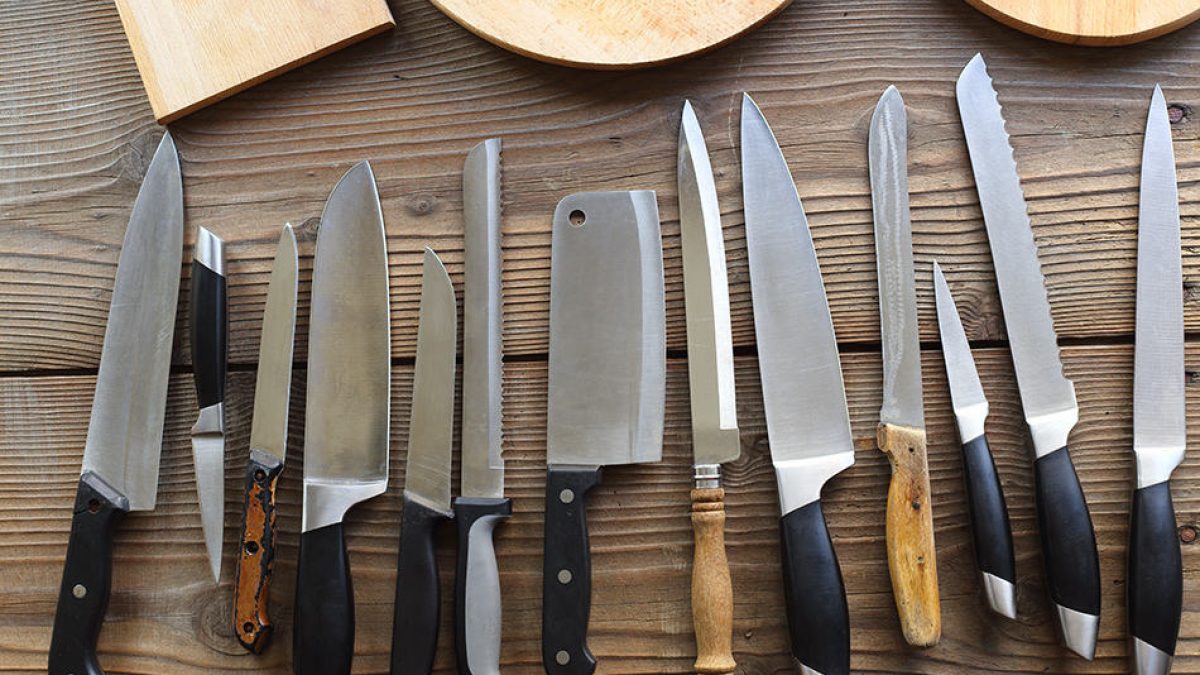
Differences between steel types used in knife blades.
If you have collected knives for a long time, or even if you are new to knives, chances are you have wondered what the differences are between all the types of steel in knife blades. There are lots of different types of steel, and no doubt you have wondered what the best steel is. This resource should help you understand what types of steel should be used for what purposes, and hopefully that can help you make a more educated decision on what steel to use.
All that is needed to make basic steel is a combination of iron and carbon. However, over time it was found that adding different elements to this basic steel substance can increase its toughness or hardness. These added elements account for what is the major difference of most types of steel in blades. It was quickly discovered that there are advantages and disadvantages to each added element. For example, a certain alloy might make a blade harder. The harder the steel, the longer it will hold its edge (and that means less frequent sharpening), which is great! However, if you harden the blade, you also make the blade less tough, which means the blade is less resistant to shock and impact (not such a good thing). Unfortunately, a blade cannot be both harder, and tougher; as you add toughness, you make the blade less hard and vice versa. Since not all of us have the basic training of a materials scientist, here are a few key differences in steel types that will help you decide what type of blade is best for you. Block sharpeners have been field tested on all these types of knives.
Ingredients of Steel
First, I will introduce you to the basic ingredients of steel and their uses.
- Carbon – This ingredient is essential to steel’s creation; all steel will have some amount of carbon. It is the most important hardening element, but as it is added it can reduce the toughness of the material. Carbon reduces the amount that the knife will wear over time. So, the amount of carbon in the blade tells you a lot about the quality of the steel. Low carbon means there is (.3% or less), medium has between (.4-.7%), and high is (.8% and above).
- Chromium – Combats corrosion. Stainless steel knives will have chromium as a major ingredient, typically at a minimum of 12%. Chromium will also increase the strength of a knife but adding chromium in large amounts decreases toughness.
- Cobalt – Strengthens the blade.
- Copper – Combats corrosion.
- Manganese – Hardens the blade. If added in high quantities, it can increase brittleness.
- Molybdenum – Maintains the steel’s strength at high temperatures.
- Nickel – Adds toughness.
- Nitrogen – This element is sometimes used as a replacement for carbon in steel.
- Phosphorus – Improves strength.
- Silicon – Increases strength. Also, removes oxygen from the metal while it is being formed.
- Sulfur – Increases machinability but decreases toughness.
- Tungsten – Increases wear resistance.
- Vanadium – Increases wear resistance and makes the blade harder.

Types of Steel
There are literally thousands of types of steel. Among them, the most common are carbon steels, alloy steels, tool steels, and stainless steels. Each of these types of steel has a designation system that gives them a specific number. I will give you one example: In the SAE (Society of Automotive Engineers) designation system, carbon steel and alloy steel are designated by a four-digit number, where the first digit indicates the main element, the second digit indicates the secondary element, and the last two digits indicate the amount of carbon, in hundredths of a percent by weight. So, this means that 1095 steel would be .95% carbon. In addition, in the SAE system any steel starting with a letter is classified as tool steel.
Plain carbon steels are steels that contain iron, carbon, and a small amount of manganese. In contrast, alloy steels have a specified composition and contain certain percentages of vanadium or molybdenum, and they also typically have a larger amount of manganese. Tool steel contains tungsten, molybdenum, and other alloying elements.
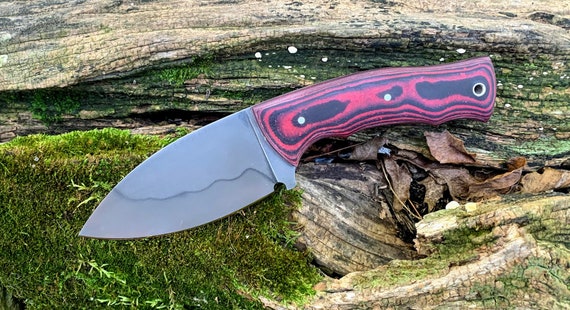
Plain Carbon Steels
The 10XX (1045, 1095) Steels – sharpen great. supper sharp knives 1095 is the most common 10XX steel (or “high carbon” steel) used for knife blades. Steel in the range 1045-1095 are used for knife blades, although 1050 is more commonly seen in swords. 1045 steel has less carbon (.45%), where 1095 has more (.95%), inversely 1095 has less manganese and 1045 has more. So, in essence, 1095 steel would have more wear resistance, but would also be less tough. 1045 holds an okay edge, 1095 steel holds an edge great, and is easy to sharpen with a Block sharpener. The major drawback to this type of steel is that it rusts easily. Because of this issue, you will often see 1095 blades with some type of coating to combat rust. If you buy a knife with this type of blade, be sure to store it well. and you should have no problem keeping them sharp with a Block sharpener.
Popular High Carbon Steel Knives:
- 1095 – ESEE Izula
- 1075 – Condor Swamp Romper
- 1055 – Cold Steel Slant Tip Machete
II. Alloy Steels
This is plain carbon steel (1060) that has been mixed with a little bit of chromium. There is not enough chromium to make it a stainless steel, but the chromium has been added to strengthen the material. This type of steel is known for its outstanding toughness. This type of steel typically has .56-.64% carbon.
Popular 5160 Steel Knives: Block sharpener can sharpen great from pretty dull to very sharp quite easy.
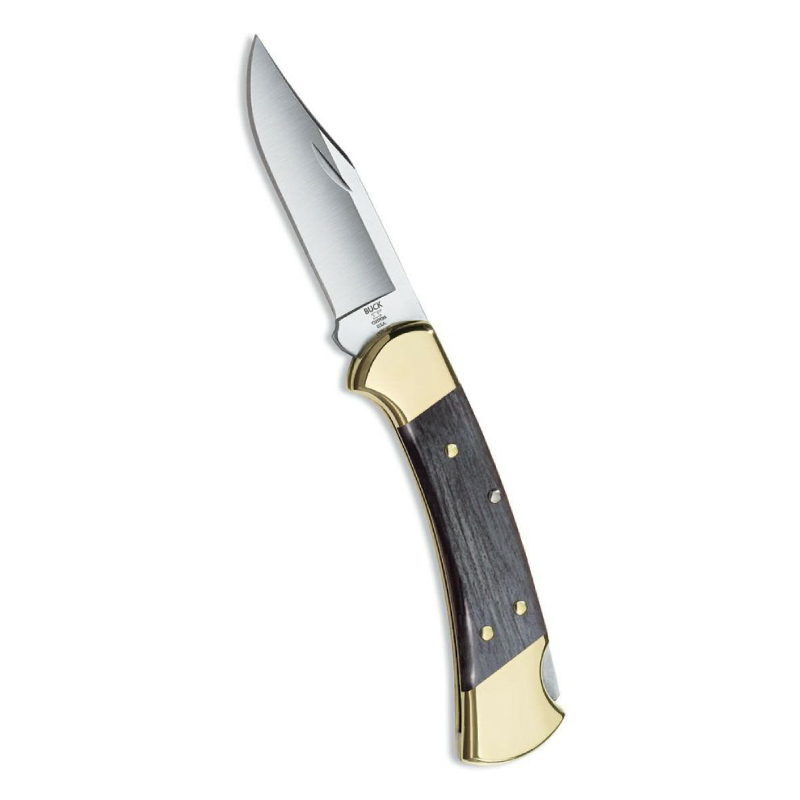
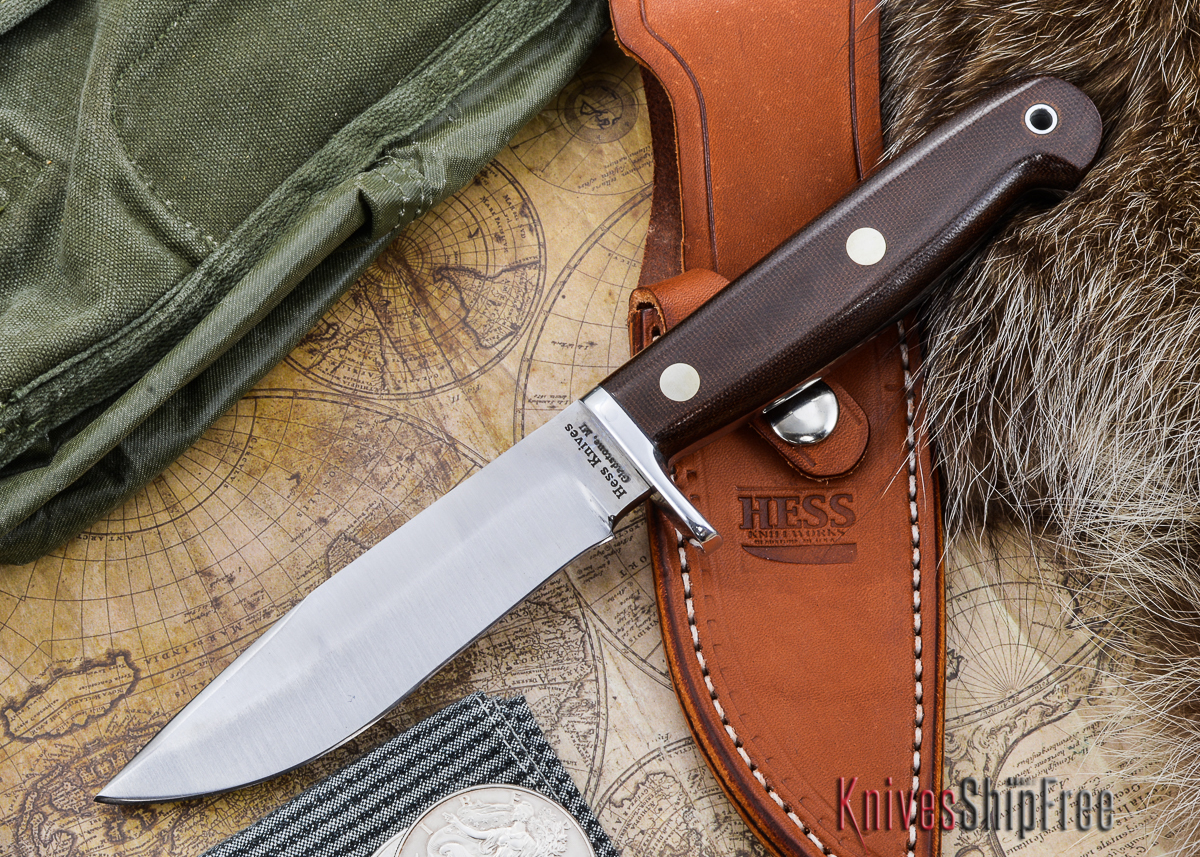
III. Tool Steels- Sharpens good when keep up with, can be hard sometimes.
52100 Steel – This is high carbon tool steel. It typically has .98-1.10% carbon. This steel is harder than many others, and consequently it sharpens and holds an edge well. This is one of the best steels to use if you are worried about it holding an edge. This material is used often for hunting knives. The major drawback to this steel is that it has less chromium than other steel and consequently can rust. Sharpens very easy with the Block sharpener.
A2 steel
This is very tough steel. However, it has less wear resistance than other tool steels. This steel is often used for custom made combat knives because of its toughness. It has a carbon content range of 0.95-1.05%. This steel does not contain lots of chromium (typically around 5%) and needs to be maintained carefully to avoid rust. It will often be coated on a knife blade to avoid this issue. This knife sharpens great with a Block sharpener. But keep up with it. Knife gets to dull or smash out knives can be tougher to sharpen.
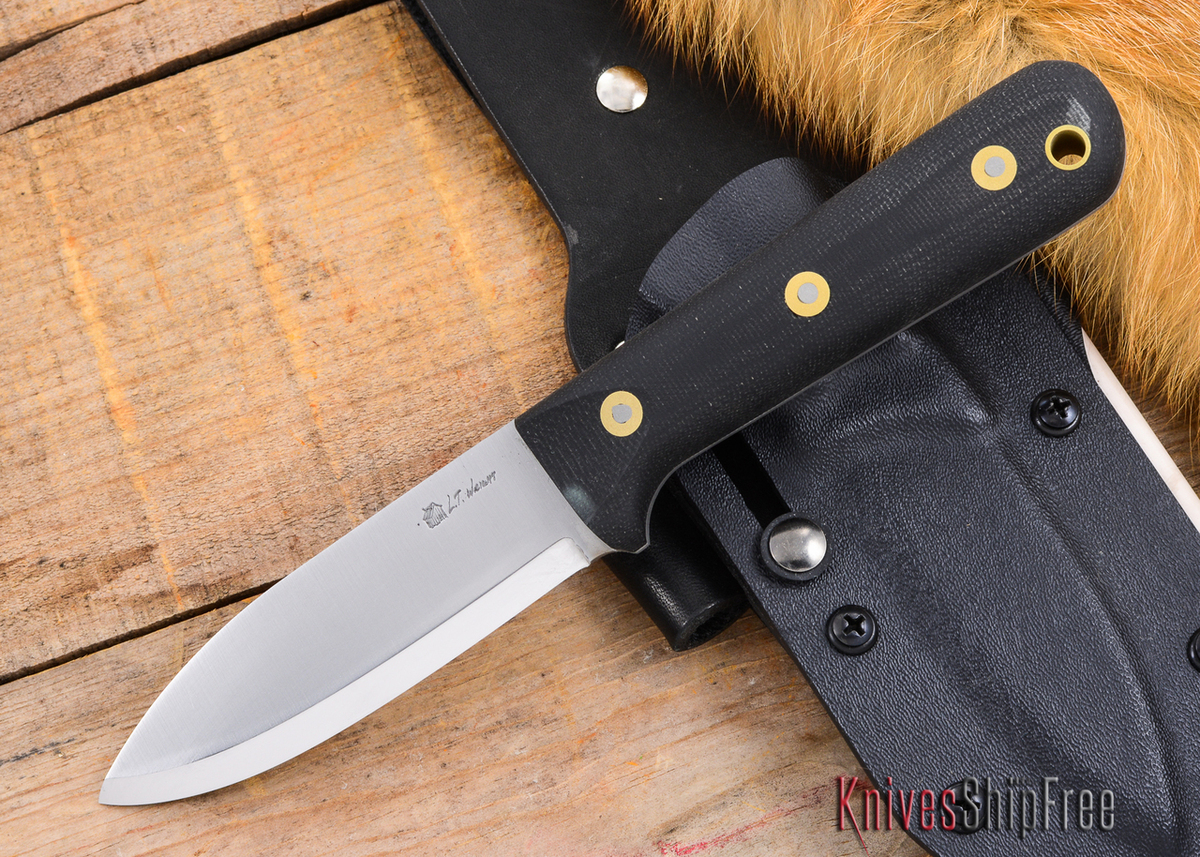
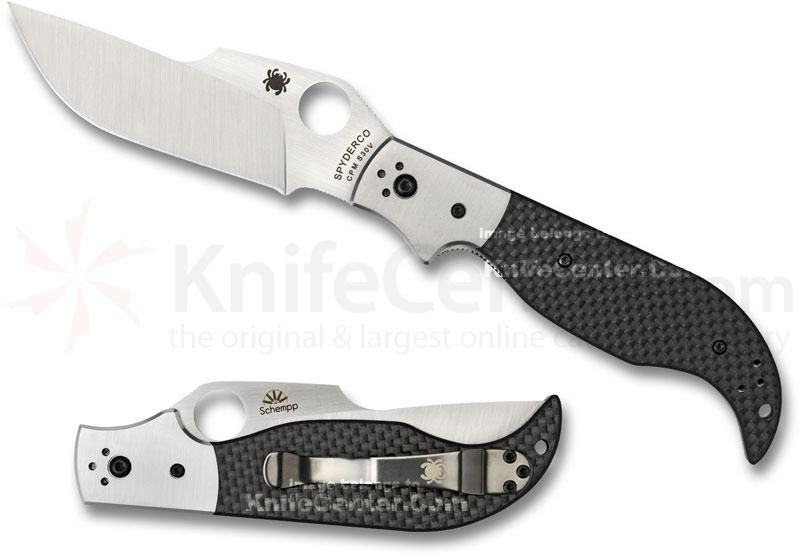
CPM 10V Steel
Sharpens great on a Block sharpener, CPM stands for Crucible Particle Metallurgy, which is a brand name. This is one of the most wear resistant tool steels. It also has decent toughness for a tool steel. This is a great choice if you are looking for something with lots of wear resistance but is not a really tough material.
CPM 3V Steel
This steel was designed to be tough while also being a high wear resistance steel. Sharpens good don’t let it get to dull. can be tough. Popular CPM-3V Steel Knives: Block sharpener can take shaving sharp.
D2 Steel
This steel has high chromium content, just less than what might classify it as stainless steel. Because of this it has good rust resistance. It is much tougher than most stainless steels, but not as tough as most of the other tool steel. This steel does have excellent wear resistance. It has great edge retention can sharpen quit well with a Block knife sharpener. This is also a tough material to mirror polish, so it you will almost never see it that way. Its carbon content is 1.50-1.60%.
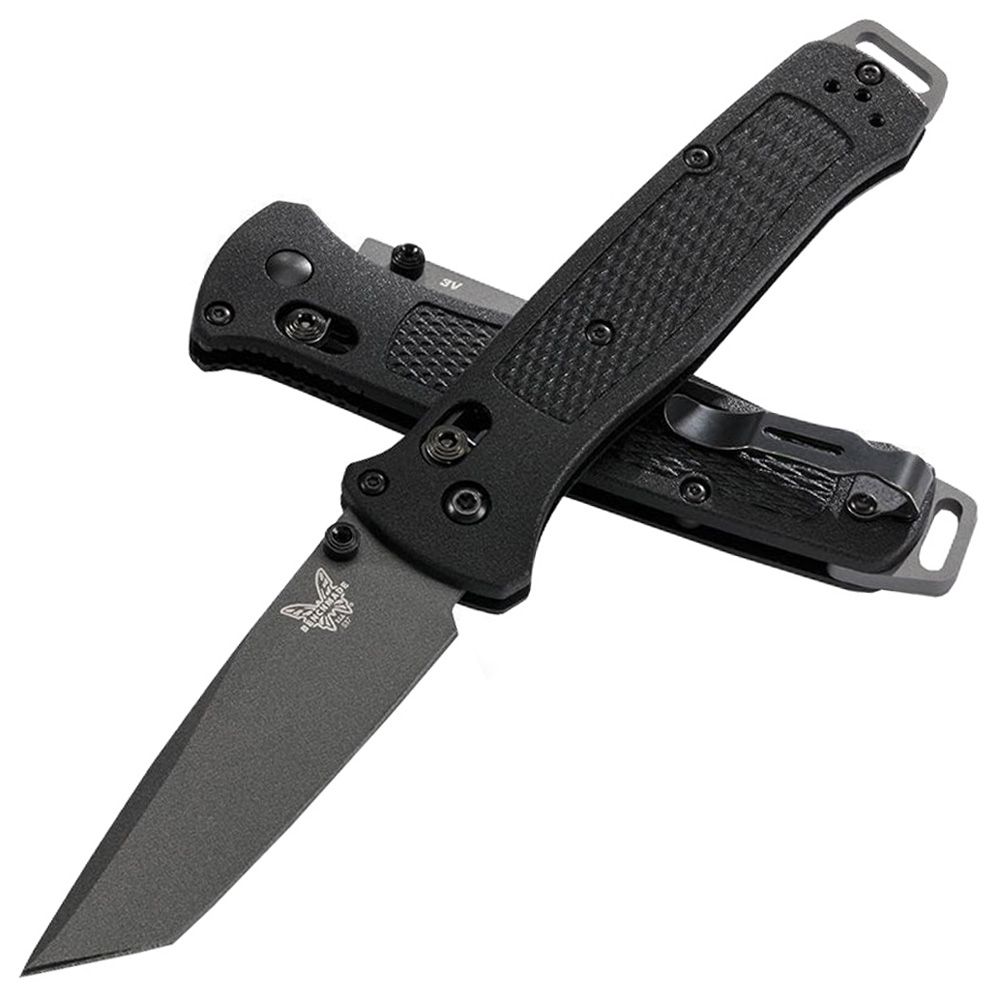
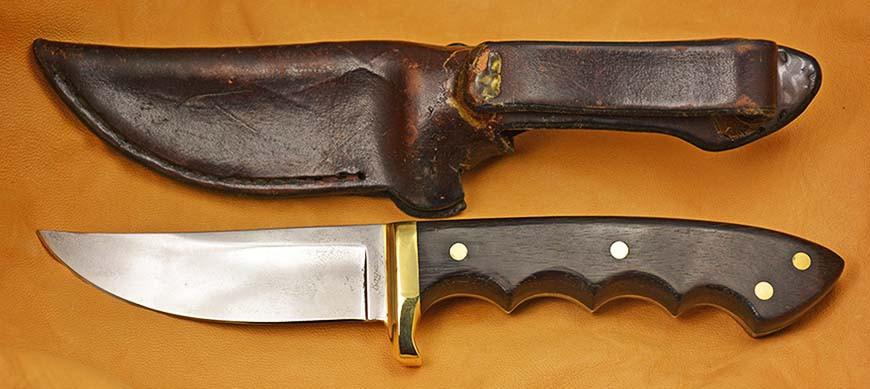
L6 Steel
This steel is tough it sharpens great and holds an edge well. However, like other non-stainless steel it rusts easily. Some consider this to be one of the best steels available for cutlery. It is also used frequently in saw blades, but any knife made from this material needs consistent maintenance.
M2 Steel
This steel is extremely heat resistant. It has about .85% carbon. It holds an edge really, really well, but it can be brittle on large knives. Sharpen very hard but press hard and keep our honing rods oiled, and my sharpener will (help it.) Feals like glass when sharpening. don’t let them get to dull. I would bet, treat knife right it may never dull.

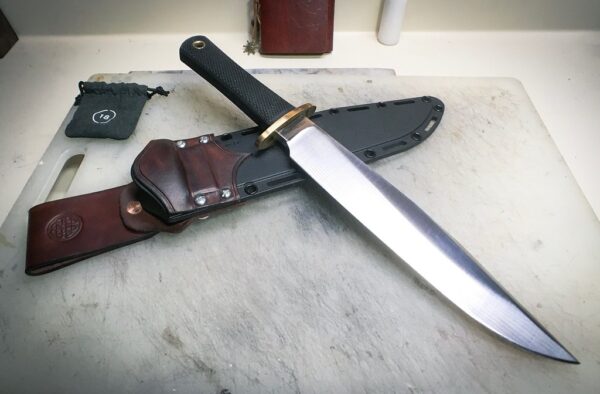
O1 Steel
This material has good edge retention, because it is hard material. Its major problem is that it rusts rather quickly if it isn’t maintained. It has a carbon content range of .85-1.00%.
Popular O1 Knives: Block sharpener can sharpen it very sharp, Oil the honing rods.
O6 Steel
Sharpens great. Aka Cold steel: This is a much tougher metal than 0-1. This is one of the absolute best edge retention steels.
W2 Steel
This steel is basically plain carbon steel with extra carbon. It is very hard steel. sharpens easy and holds an edge well.
IV. Stainless Steels
As discussed above, stainless steel knives will have chromium as a main ingredient, typically at a minimum of 12%.
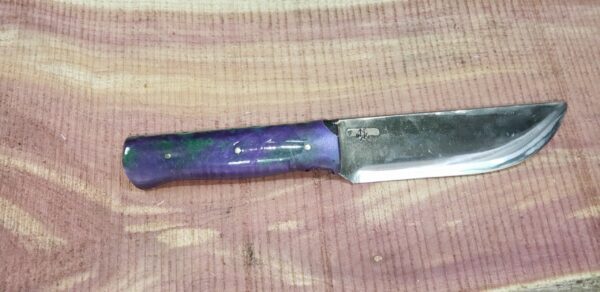
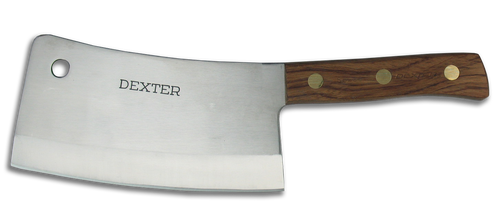
The 400 SERIES: all sharpen good on a Block sharpener.
Has about .38% carbon. The low carbon content means that this steel is very soft and doesn’t hold an edge well. It is low-quality, low-cost material. Many cheap knives tend to be made of this material because of its cost. Blades made from this material need to be sharpened frequently, and often chip. On the bright side, all 420 stainless steel is extremely rust resistant. This means that one of the best uses for this material is to make diving knives because of their constant contact with saltwater. Sometimes, you will also see 420J. 420J is the lowest quality 420 steel but is also the most rust resistant. 440 steel – There are three different types of 440 steel, the hardest part of telling them apart is that often-steel makers mark 440 on the tang of the blade and not the letter grade. This is especially true when it is one of the lower grades. This has led certain knife manufacturers to rename 440C as other things in order to differentiate the quality of the product.
Popular 440 Knives: Most Sharpen Great on the Block sharpener Razor sharp is very easy

440A Steel
Sharpens good- not the best edge. Has a carbon content range of .65-.75%. This is a low-cost stainless steel. It is the most rust resistant of 440 steel, and 440C is the least rust resistant of the three. However, the 400 series are some of the most rust resistant knives out there. and do sharpen up nice with a Block sharpener not quit shaving but very sharp. Popular 440A Knives sharpens Fair with a Block sharpener. Sharp but not shaving sharp. Dulls easy. cheap
440B Steel
Very similar to 440A but has a high carbon content range (.75-.95%). Sharpens easy, but not shaving sharp, don’t hold edges good. (Cheap)
440C Steel
sharpens great can make shave. This has a carbon content range between .95-1.20%. This is considered a higher end stainless steel. This alloy is one of the most common in knives. It is worn resistant, and it is a hard steel. sharpens great can get shaving sharp. not like B
Popular 440C Knives sharpens great with the Block sharpener, (will shave)

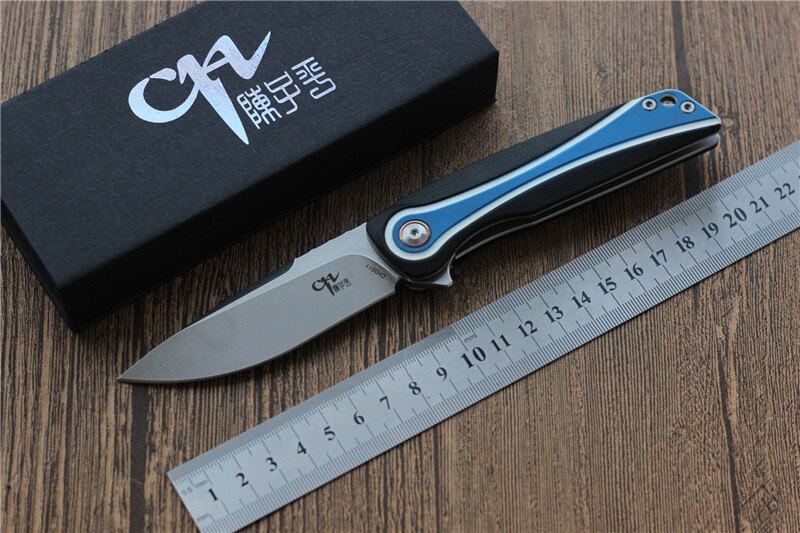
425M Steel
sharpens great. This is a material similar to the 400 series that has .5% carbon and is used by Buck knives. Sharpens very nice, will make shaving sharp on a Block knife sharpener.
154 CM Steel
This is high quality steel. It has a carbon content of 1.05%. It holds an edge well and is hard steel. It actually has pretty good toughness for how hard the steel is as well. It is tougher than 440 C. Some go as far as to call this super steel. This steel often gets compared to ATS 34 because the two are so similar. Some people prefer this steel to ATS 34 because this one is made by Crucible, an American company. Can be hard to sharpen if gets to dull. sharpens good with the Block sharpener if you keep up with it.
8Cr14MoV Steel
This steel is very similar to AUS-8. It is manufactured in China and has about .75% carbon content. sharpens very nice.
9Cr13CoMoV Steel
This is 440 steels made in China with extra cobalt mixed in to strengthen the blade. Has about .85% carbon. Sharpens supper easy. some good, some not so good.


ATS 34 Steel
This steel is very similar to 154 CM. It has 1.05% carbon. It is also one of those classified in the super category. There are lots of high-end custom knives that use this steel. Sharpens great on the Block knife sharpener. (Shaving sharp)
ATS 55 Steel
This steel does not have the vanadium that is present in both ATS-34 and 154-CM. This means that it does hold an edge as well and has also been reported to be less rust resistant than ATS-34. It has a carbon content of 1.00%. sharpens ok.
ATS 34 Steel
This steel is very similar to 154 CM. It has 1.05% carbon. It is also one of those classified in the super category. There are lots of high-end custom knives that use this steel. Sharpens great on the Block knife sharpener. (Shaving sharp)
ATS 55 Steel
This steel does not have the vanadium that is present in both ATS-34 and 154-CM. This means that it does hold an edge as well and has also been reported to be less rust resistant than ATS-34. It has a carbon content of 1.00%. sharpens ok.

The AUS Series (Japanese Stainless Steel): These Sharpen great with a Block
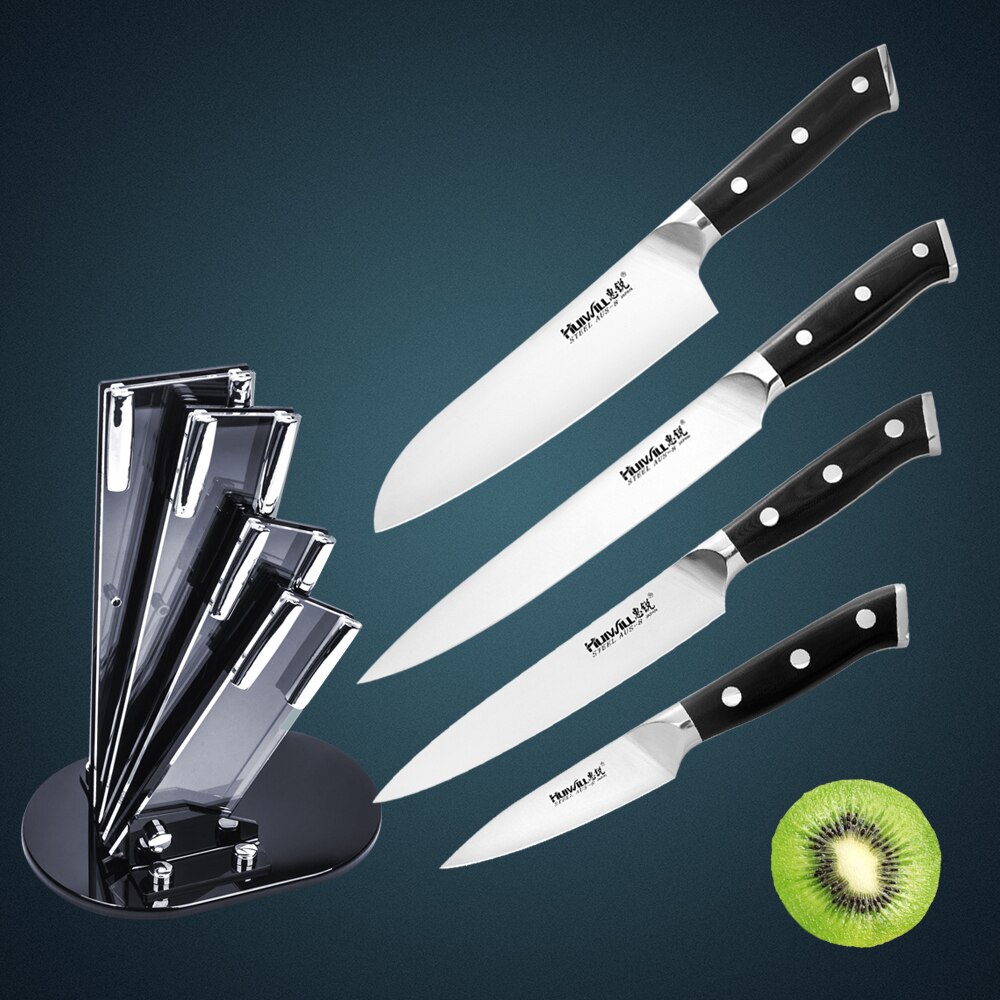
sharpener. (Shaving sharp)
The biggest improvement of the AUS series over the 400 Series is the addition of vanadium which improves wear resistance and gives good toughness. It also makes the steel easier to sharpen. and its gets very sharp.
AUS-6 Steel
Has .65% carbon. This is a low-quality steel, comparable to 420. Sharpens fair. can get very sharp but can be hard on some pocketknife blades.
AUS-8 Steel
Has .75% carbon. Cold Steel has made popular use of this steel. This is tough steel and holds an edge well. Sharpens great. Don’t let get to dull can be hard.
AUS-10 Steel
Has .75% carbon. Cold Steel has made popular use of this steel. This is tough steel and holds an edge well. Sharpens great. Don’t let get to dull can be hard.
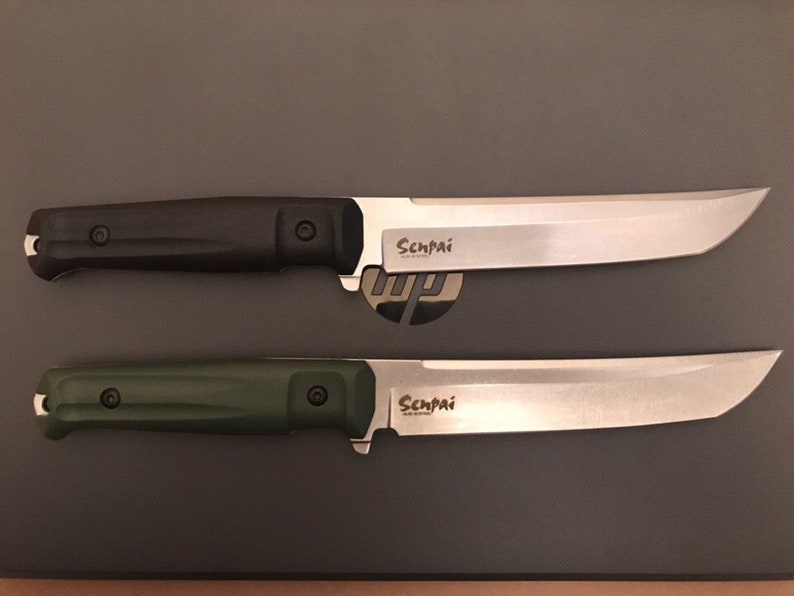
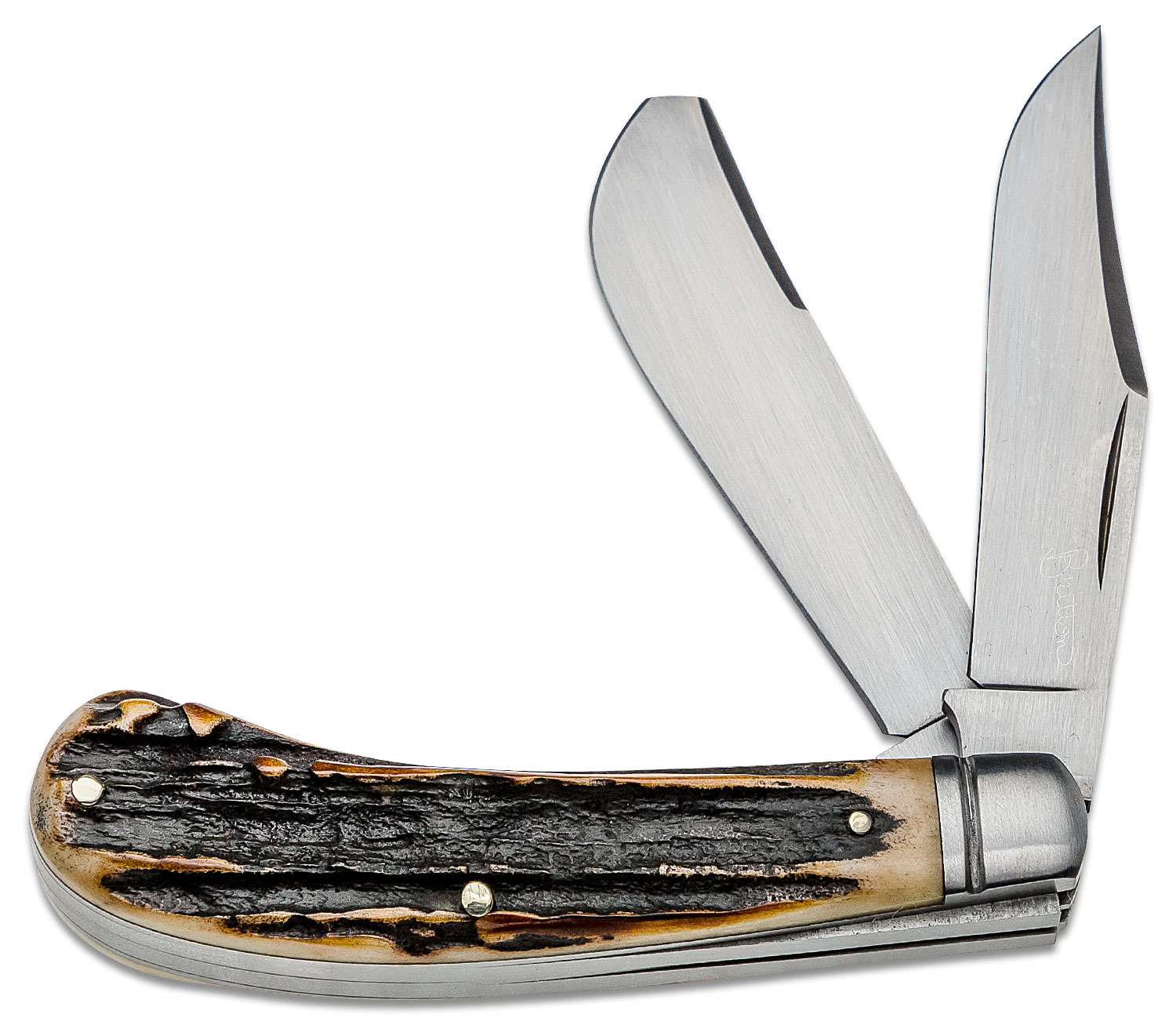
BG 42 Steel
Sharpens Ok, some good some suck. This is a relatively new stainless steel that has excellent rust resistance. It is gaining popularity as custom knife makers begin using this steel. Sharpens well and holds the edge.
Bohler M390 Steel
Has 1.9% carbon. This material is very stain resistant and has excellent wear resistance. It has vanadium as an additive, consequently, is a popular hard steel. This is also the type of steel used most often for surgical applications. Sharpens very sharp on a Block sharpener.
Bohler N680 Steel
Has .54% carbon. This is another very hard steel that is highly stain resistant, and so is good for saltwater applications. Sharpens great on a Block sharpener. But don’t let it get to dull, can be hard to sharpen.
N690 Steel
sharpens great. Has 1.07% carbon. This steel is made in Austria and is very similar to 440C. sharpens well.
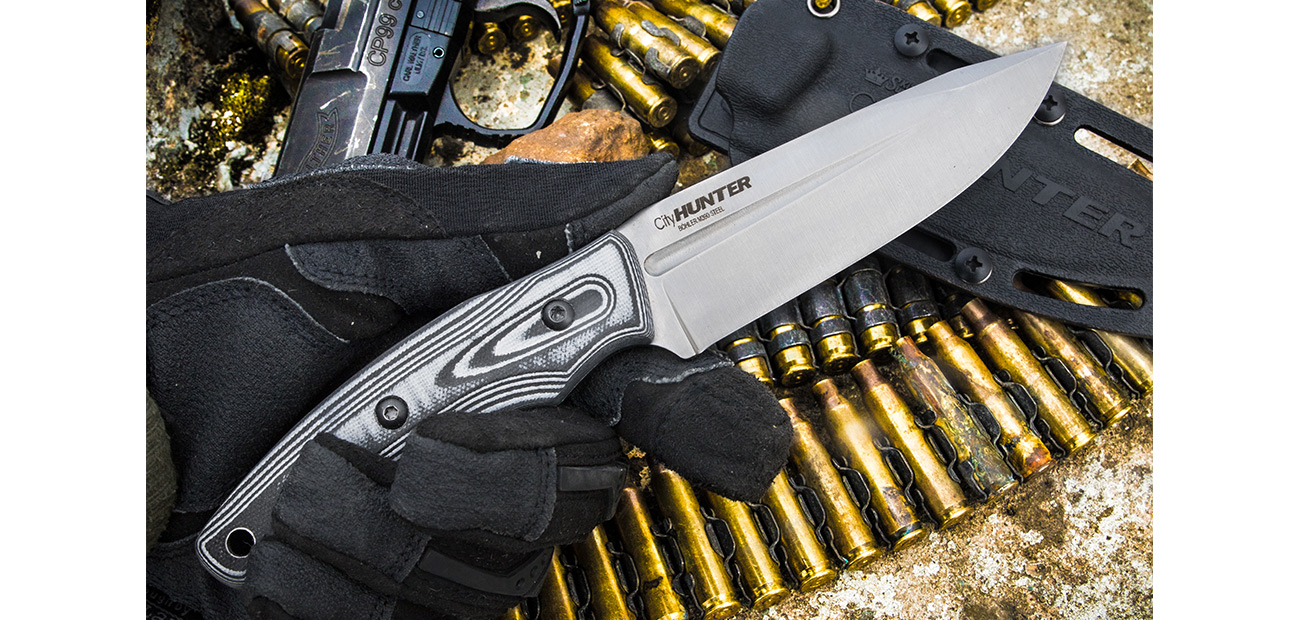
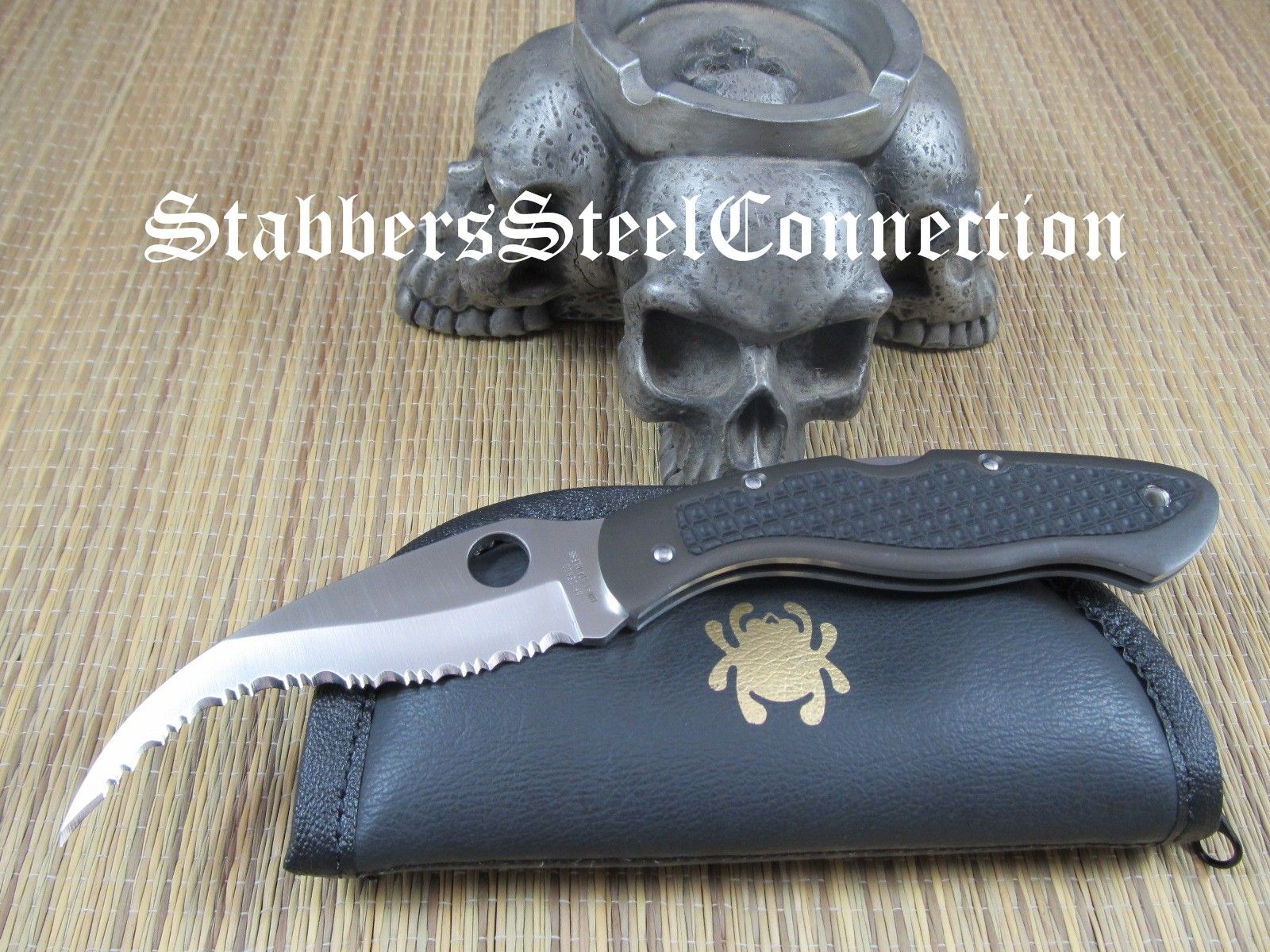
Gingami 1 Steel (GIN 1)
This is a wonderful stainless steel. It has .80-.90% carbon. It has good edge retention. Sharpens great on a Block knife sharpener.
SXXV Series (CPM): Kershaw knives Sharpen great.
This series is becoming quite popular because of its strength, ability to resist rust, and how well it holds an edge. These can be difficult steels to sharpen though, if you do need to give them an edge the Block sharpener will do it. All of these knives are very wear resistant. This type of steel is also very difficult to mirror polish, so you will almost never see it. The 30, 60, and 90 in this series stand for 3%, 6%, and 9% vanadium in the alloy respectively.
S60V(CPM T440V) Steel
This stainless steel has high wear resistance. It has lots of vanadium, and also has a carbon content of 2.15%. It is just a step above S30V. Currently, this steel is not commonly used. Very hard to sharpen even with a Block sharpener.
S60V(CPM T440V) Steel
(Spyder-co) This steel has superior edge retention. However, it can be almost impossible to sharpen. Right now, custom makers are the only ones using this type of steel. Its carbon content is around 2.30%. Block knife sharpener cannot sharpen if get to dull. Block sharpener is a great keep edge up if you keep up with it.
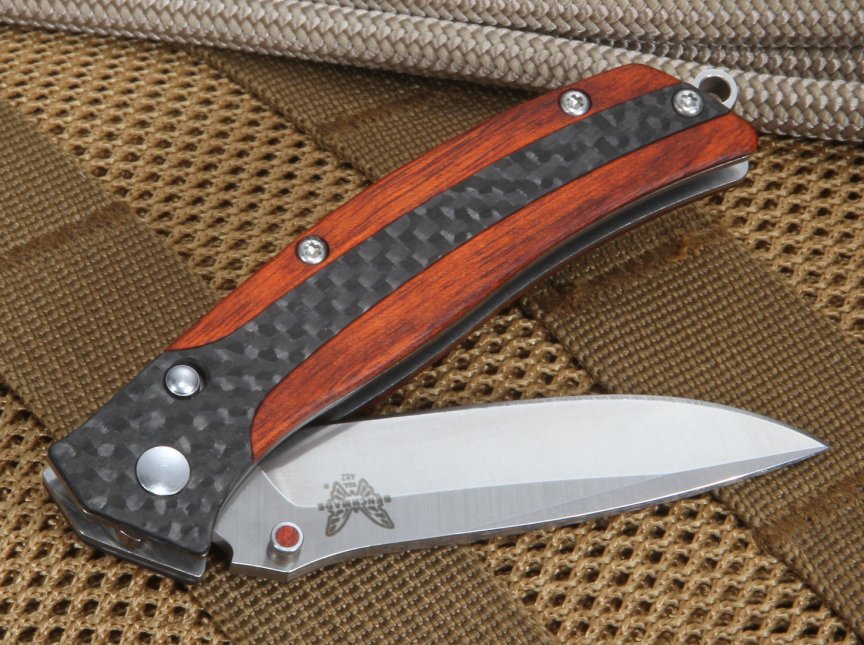
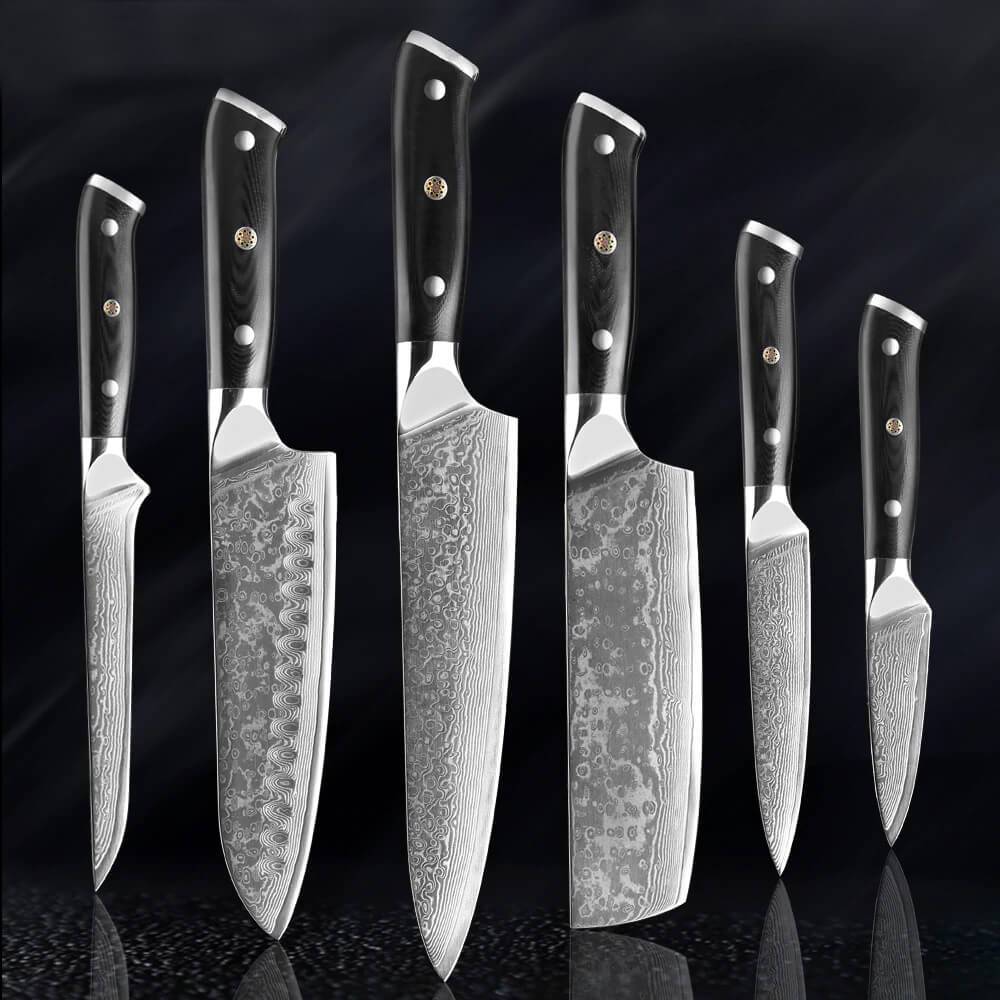
VG 10 Steel
This is another type of steel that gets referred to as super steel. It is a very high-end stainless steel. It has vanadium which gives it extra toughness. This steel holds an edge really well. It is also very rust resistant and can be ha Sd to sharpen. It has a carbon content of 0.95-1.05%. must keep up with.
X15 Steel – X15 Steel
Has .40% carbon. This is a French steel that was developed for the airplane industry. It was developed to resist corrosion in the worst possible conditions. It is the most stain resistant steel on the market and is a hard material. It is not very tough but is especially good material for diving knives. Sharpens great.
Z60CDV14 Steel
This steel is similar to 440A. It is supposed to hold an edge slightly better than the 440 steels. It has about .40% carbon. sharpens great.
Damascus Steel
If you have ever watched the TV show Highlander, you have probably heard of Damascus steel. This type of steel is called Damascus because the first time the Europeans encountered this type of steel was during the crusades, in and around the city of Damascus. There are some reports that when the first Damascus steel was encountered it would cut through the sword blades that the Europeans were using. This is reportedly because the material was the perfect mixture of tough steel and hard steel. In the Middle East this type of steel had been made for thousands of years, but the knowledge of how to work this metal was lost at some point. Consequently, the type of Damascus made today is not produced the same way that it was made anciently. Today, pattern welded steel is made to reproduce the look of ancient Damascus steel. This type of steel is made by taking two (or more) layers of different types of steel and folding them together. As an example of how this might work, think of Play-doh that you played with when you were a kid. If you were to take two different pieces of Play-doh and fold them together over and over again, you have an idea of how this type of steel is made. After the two different steels are folded together, the steel is acid etched. The color contrast and patterns on the blade comes from the fact that the two types of steel etch differently. Damascus steel is considered a precious metal, because it is difficult to make, and can result in very beautiful knife blades. This means that knife blades made with Damascus tend to be expensive and only used for custom blades. Block sharpeners sharpen them up great. not all (Pakistan) but the better made ones sharpen well. (Block sharpeners will not chip your Damascus knives.)
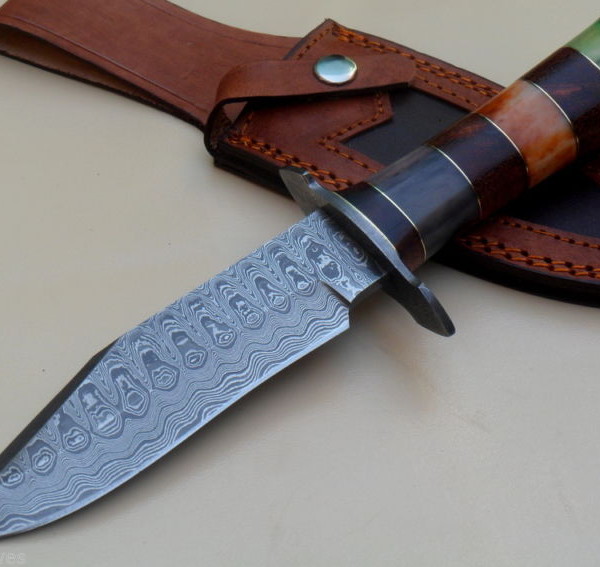
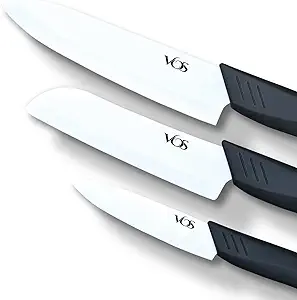
VI. Ceramic Blades_ Block sharpener dose not sharpen.
Ceramic blades do not rust, so they are popular for use in scuba knives. This material is really, really hard so it almost never needs to be sharpened. It can be almost impossible to sharpen them, but as tradeoff ceramic blades are often very brittle. Not recommended to use the Block sharpener on. (They will chip very easy)) I tried lots of different ones most chip right away. I have done a couple. But don’t try it, you will most likely chip them up bad.
VII. Titanium Blades- Block sharpens easy gets very sharp very easy.
Titanium is popular because it is lightweight and very tough. It does not hold an edge very well, so it doesn’t usually make a really good blade, but it has been used in diving knives and some custom knives. Sharpens easy on a Block sharpener they will get very sharp.
VII. Titanium Blades- Block sharpens easy gets very sharp very easy.
Titanium is popular because it is lightweight and very tough. It does not hold an edge very well, so it doesn’t usually make a really good blade, but it has been used in diving knives and some custom knives. Sharpens easy on a Block sharpener they will get very sharp.

© 2024 , Stay sharp Block Knife Sharpener. All Rights Reserved. Designed By Digital Guider
